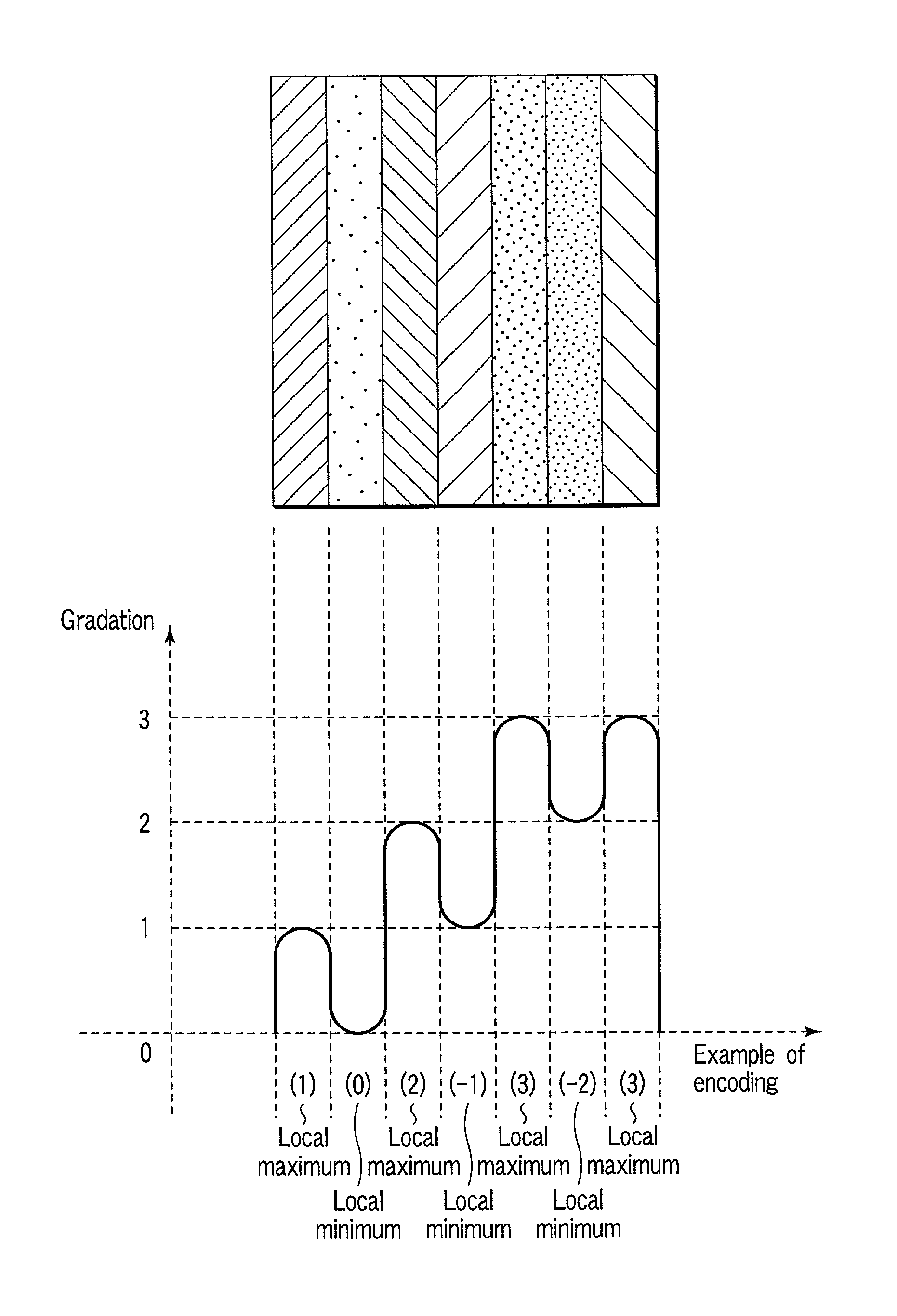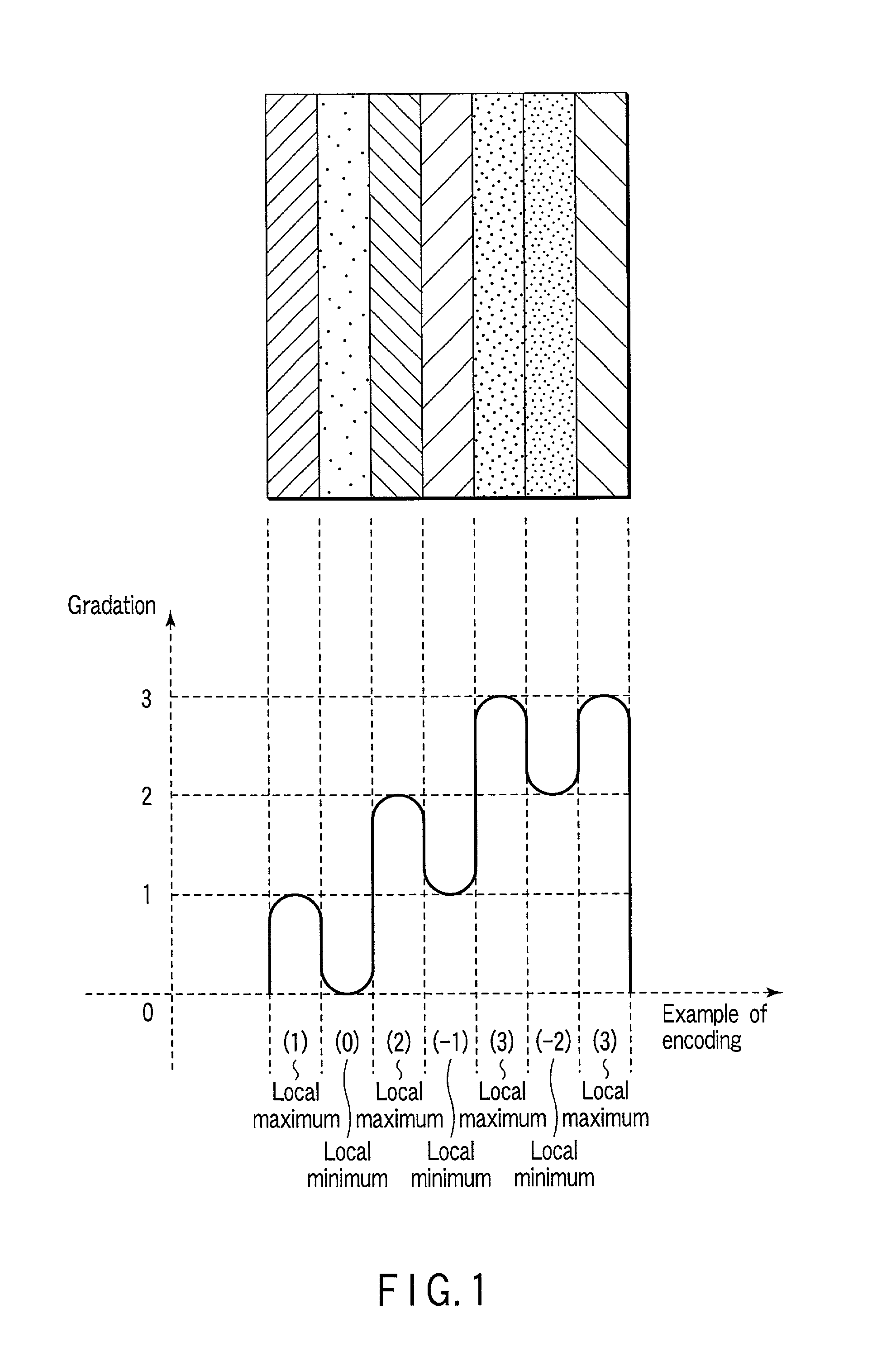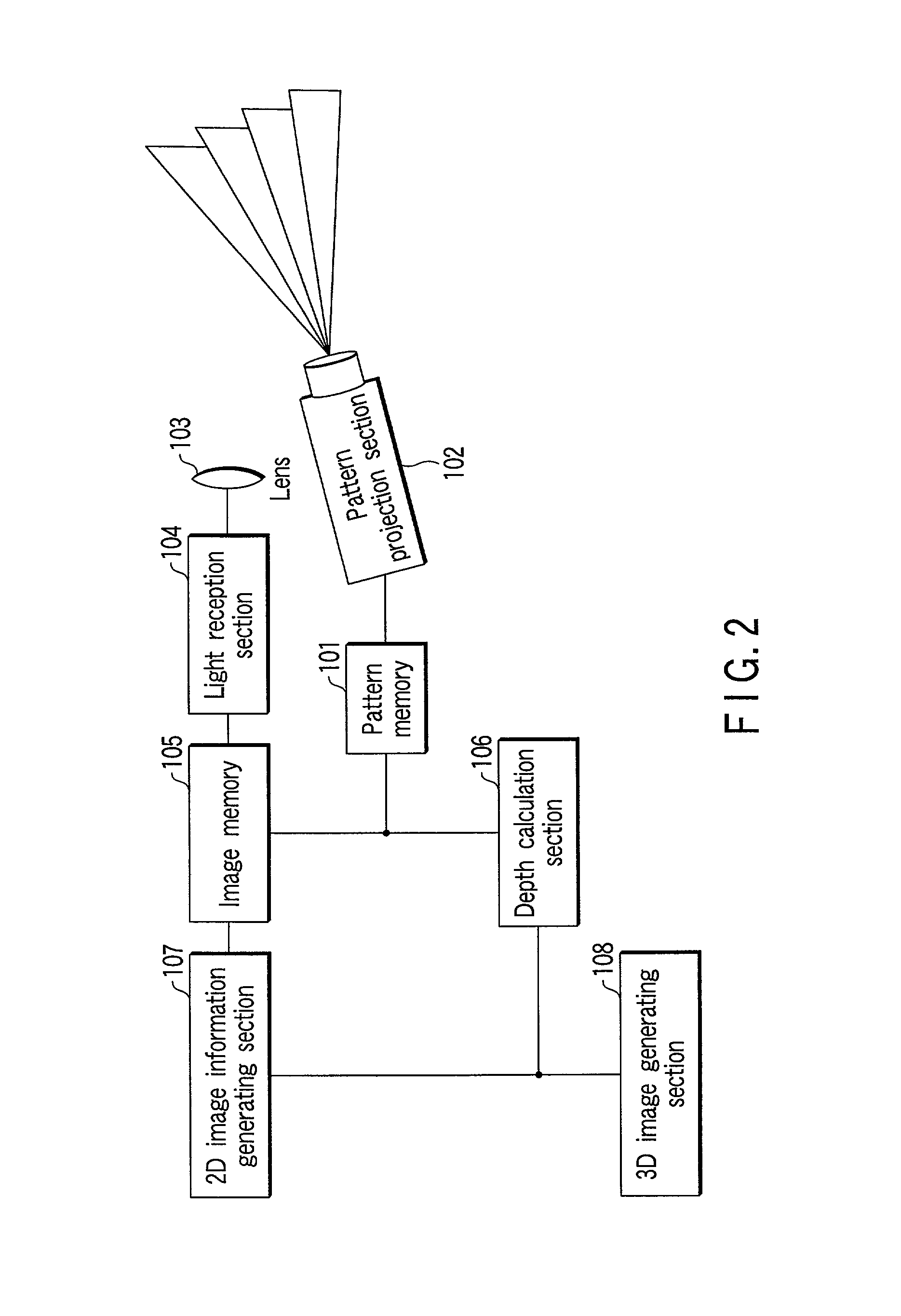3D image acquisition apparatus and 3D image acquisition method
a technology of image acquisition and image acquisition method, which is applied in the field of 3d (three dimensional) image acquisition method, can solve the problems of difficult image feature correspondence, time and precision measurement, and the inability to measure the shape of objects without textur
- Summary
- Abstract
- Description
- Claims
- Application Information
AI Technical Summary
Problems solved by technology
Method used
Image
Examples
first embodiment
(First Embodiment)
[0051]A first embodiment of the invention will now be described in detail with reference to FIGS. 1–3.
[0052]In order to describe a pattern light projection method for spatial pattern encoding according to the first embodiment, FIG. 1 shows a four-gradation stripe pattern by way of example. This pattern is a predetermined light pattern which is projected on an object when a 3D image of the object is to be acquired, for example, in order to measure the shape of the object.
[0053]This predetermined pattern comprises a plurality of areas (stripes in FIG. 1) each having a substantially constant luminance value. The luminance (gradation) of each area belongs to any one of predetermined luminances (gradations). In FIG. 1, each stripe belongs to any one of four gradations (0, 1, 2, 3). In this example, pattern areas having local maximum luminance values and local minimum luminance values are alternately arranged.
[0054]Each area is arranged such that if one of its adjacent a...
second embodiment
(Second Embodiment)
[0074]A second embodiment of the present invention will now be described with reference to FIG. 4. The second embodiment is substantially similar to the first embodiment shown in FIG. 2 with respect to the spatial pattern encoding method. However, as shown in FIG. 4, the structure of the 3D image acquisition apparatus is different, as described below. The imaging means are provided at a plurality of locations with different viewpoints, for example, on the right and left sides (two locations) of the pattern projection section 202. Accordingly, a pair of image memories are provided on the right and left sides. Moreover, means for determining the right-and-left correspondency is additionally provided.
[0075]More specifically, the 3D image acquisition apparatus according to the second embodiment comprises a pattern memory 201 storing a predetermined projection-light pattern; a pattern projection section 202 for projecting the pattern light on the object; light collecti...
third embodiment
(Third Embodiment)
[0083]A third embodiment of the present invention will now be described with reference to FIGS. 5 and 6.
[0084]The structure of the 3D image acquisition apparatus used in the first embodiment is substantially the same as that of the 3D image acquisition apparatus of the third embodiment. However, the spatial pattern encoding method is different, as shown in FIG. 5.
[0085]FIG. 5 shows an example of a stripe pattern in which local maximums / minimums of a plurality of color signals are aligned. Gray scale values are used in the structure of the pattern adopted in the first embodiment. On the other hand, the pattern used in the third embodiment is a pattern of respective color components (R, G, B), and areas with local maximum luminance values and areas with local minimum luminance values are aligned. As is shown in FIG. 5, in the color stripe pattern, local maximum positions and local minimum positions of RGB are aligned.
[0086]R, G and B signals are individually encoded,...
PUM
 Login to View More
Login to View More Abstract
Description
Claims
Application Information
 Login to View More
Login to View More - R&D
- Intellectual Property
- Life Sciences
- Materials
- Tech Scout
- Unparalleled Data Quality
- Higher Quality Content
- 60% Fewer Hallucinations
Browse by: Latest US Patents, China's latest patents, Technical Efficacy Thesaurus, Application Domain, Technology Topic, Popular Technical Reports.
© 2025 PatSnap. All rights reserved.Legal|Privacy policy|Modern Slavery Act Transparency Statement|Sitemap|About US| Contact US: help@patsnap.com



